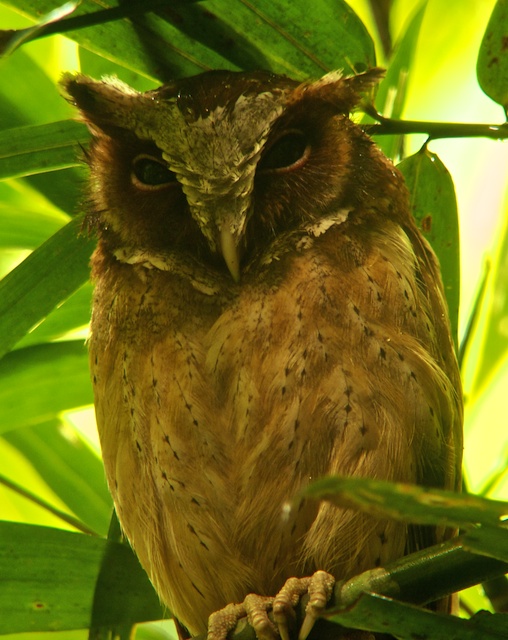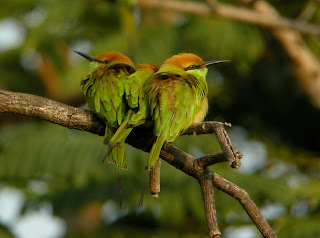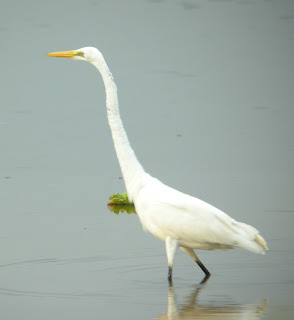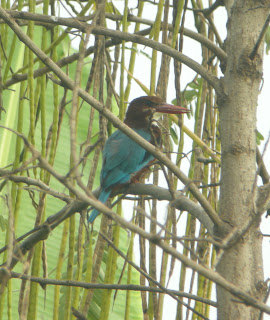Green bee-eater
Merops orientalis
นกจาบคาเล็ก
Huay Mai Teng Reservoir, Ratchaburi
30.10.10
An early start this morning from the comfort of my own bed. On getting up the first thing that hit me was the cool air so off went the fan for the first time in many months. I headed out to the reservoir with memories of almost running over four black kites last year and wondering what might lie in wait.
Thailand early in the morning is always interesting. The monks, bare-footed and dressed in saffron or brown robes are out collecting alms and the faithful are out waiting for them to pass. It's called pindabat and it always serves to remind me what a remarkable place Thailand is because this is happening everywhere in Thailand, from the centre of Bangkok to the more remote parts of the Kingdom.
Green bee-eaters
Merops orientalis
นกจาบคาเล็ก
Huay Mai Teng Reservoir, Ratchaburi
30.10.10
Huay Mai Teng reservoir took me by complete surprise. Due to the volume of rain over the last four weeks the reservoir is virtually full, almost overflowing. You have to see it to believe it and so I can understand how severe the flooding must have been elsewhere in Thailand. So there was no possibility of running over kites or any other bird because there was so much water that the slip roads into the reservoir were virtually covered. Four weeks ago the reservoir was really low. It covers an extensive area so for the water to reach its current level, the highest I have ever seen it, there must have been a truly almighty deluge.
Houses on the edge of the reservoir
Huay Mai Teng Rerservoir
30.10.10
The water is basically metres from these houses where once it was about 0.75 km. If there is much more rain this area will be covered by water.
There was not shortage of birds and almost immediately I managed a lifer in a Richard's pipit. I claim this simply on the basis that there were so many Paddyfield pipits around and this one looked bigger and had a much clearer breast markings. I was looking for the extra long rear toe but it was not visible in the grass. It had to be a Richard's and I feel confident now that I have checked the guide book. So it gets a tick but no photographs.
Green bee-eater
Merops orientalis
นกจาบคาเล็ก
Huay Mai Teng Reservoir, Ratchaburi
30.10.10
There were plenty of green bee-eaters around looking quite magnificent. I managed a few shots of these fellows as they were perched and not quite as manic as the the other birds. As you can see they are moulting but they are envertheless beautiful,striking birds.All I can say is I am grateful I am not a bee; I really wouldn't want to be speared by that frightening looking bill!
Great Egret
Casmerodius albus
นกยางโทนใฆญ่
Huay Mai Teng Reservoir, Ratchaburi
30.10.10
A great egret, a little egret, a white-throated kingfisher, a glimpse of an unmistakable pied kingfisher, common sandpiper, little cormorant, black drongo, chinese pond heron, plain-backed sparrow, sooty-headed bulbul, streak-eared bulbul, a first asian flycatcher of the "winter", a black-naped oriole and a juvenile, hundreds of barn swallows and then a magnificent female pied harrier. So pleasing to know the harriers are back. I couldn't get a decent shot of the harrier but there is one coming. This bird had the diagnostic white uppertail covert. A few minutes later a black kite appeared on the scene and took a little interest in my presence. I would say this one was milvus migrans as there was a lot of white on the underwings and the main underside from the head down to the belly was heavily streaked. There were some very obliging little ringed plover, one still sporting his breeding plumes and the other non-breeding.Also a yellow wagtail, motacilla flava thunbergi, but the photograph leaves a lot to be desired. Abundant red-wattled lapwing too.
Little Ringed Plover
Charadrius dubius
Top - breeding
Bottom - non-breeding
นกหัวโตเล็กขาเหลีอง
Huay Mai Teng Reservoir, Ratchaburi
30.10.10
I then drove over to my normal patch and not only was the road across completely covered but the water has virtually encroached on peoples' houses. See above photo. I then proceeded to another favourite spot and here access was barred because the road has crumbled as water rises on both sides. Rain indeed but fantastic to see this water is being saved especially when in six months time it will be so badly needed.
Pied Harrier - male
Circus melanoleucos
เหยี่ยวด่างดำขาว
Huay Mai Teng Reservoir, Ratchaburi
30.10.10
What a lovely way to spend a few hours in the morning! I had some business to take care of mid-morning but I managed to persuade Luna to come back with me in the afternoon. We almost ran over a male pied harrier. What a stunning bird! With my EOS Kiss X3 and humble EFS 55-250 mm lens zoom I managed to snap it. I really want to get the digiscope onto this fellow to do him justice. Looks like I will be investing in a portable hide and trapping mice to tempt these fellows into range. I also saw two quail which got me thinking but they really were a flash in the pan and no sooner had I seen them than they had disappeared.
I offer this common kingfisher shot as an indicator of the improvement in my shooting skills. This was taken in poor light at a distance and nearby a very elegant common moorhen was paddling around - too far away and too gloomy to take a shot of it. What a great day!
Common Kingfisher
Alcedo athis bengalensis
นกกะเต็นน้อยธรรมดา
Huay Mai Teng Reservoir, Ratchaburi
30.10.10












































